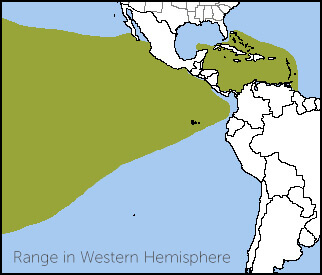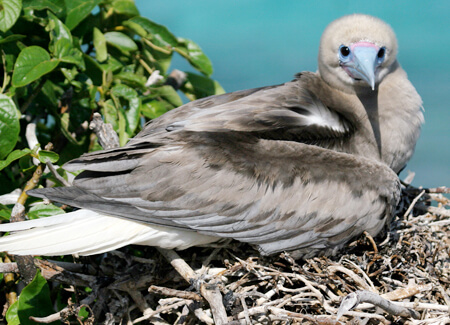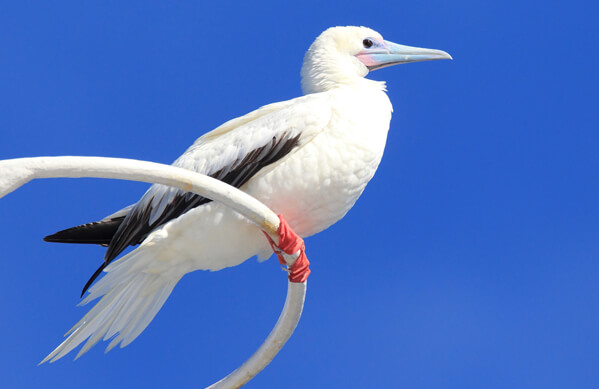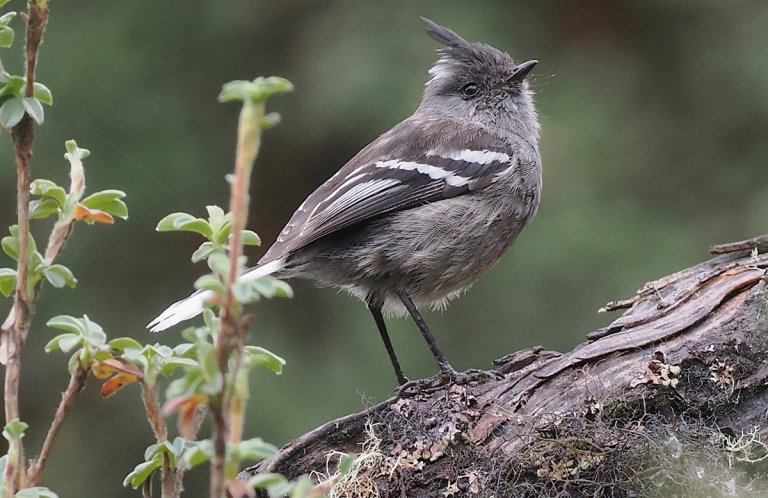 The Red-footed Booby, the smallest member of the gannet and booby family, occurs in several white and brown color morphs, but all share the striking red legs and feet that give the bird its name. The name “booby” may come from the Spanish word bobo, meaning "stupid," since these birds—having no natural predators on their nesting islands—show no fear of humans. They often roost on boats at sea and appear tame.
The Red-footed Booby, the smallest member of the gannet and booby family, occurs in several white and brown color morphs, but all share the striking red legs and feet that give the bird its name. The name “booby” may come from the Spanish word bobo, meaning "stupid," since these birds—having no natural predators on their nesting islands—show no fear of humans. They often roost on boats at sea and appear tame.
Like other island-nesting seabirds such as Laysan Albatross, Red-footed Boobies are in decline due to climate change-induced sea level rise, habitat loss, overfishing, and predation by invasive species.
Sky-pointing Sula Species
The Red-footed Booby occurs worldwide and can be found over most tropical oceans. It is an uncommon vagrant to the mainland United States, sometimes seen off the California coast or at sea off southern Florida. The Hawaiian Islands—where ABC has an ongoing Hawai'i Program focused on protecting the islands' endangered birds—are the only location in the United States where it nests.
Sign up for ABC's eNews to learn how you can help protect birds
The Red-footed is the most common booby species in Hawai'i, found in large colonies on most of the Northwestern Hawaiian Islands and on Ka'ula Rock, Lehua, Kaua'i, and O'ahu. The largest of these colonies is at Kilauea Point National Wildlife Refuge, which contains more than 2,000 breeding pairs.
The male Red-footed Booby courts a female by “sky-pointing,” throwing his head back until his bill is pointing directly upwards. Males collect twigs and sticks to build the nest, which is placed on top of a shrub or among the branches of a small tree, usually only a few feet from the ground. The female lays a single egg, which is incubated by both sexes.

Red-footed Booby by Sophie Webb
Red-footed Booby, High-diver
Like the Least Tern and other tern species, Red-footed Boobies are spectacular divers, plunging into the ocean at high speeds to catch prey. They are beautifully adapted for diving, with sleek, torpedo-shaped bodies, closeable nostrils, and long wings that wrap around their bodies as they slice into the water.
Red-footed Boobies feed at sea during the day, taking small fish or squid that gather at the water's surface and even snatching flying fish from the air. They are often seen in large groups, feeding in association with other ocean predators such as tuna and dolphins that chase shoals of fish towards the surface.
These birds are also strong flyers and can travel up to 100 miles while searching for food.
Finding Shelter in Hawai'i
ABC has collaborated with the U.S. Fish and Wildlife Service, Pacific Rim Conservation, and the Kaua'i Endangered Seabird Recovery Project to build a predator-proof fence at Kilauea Point National Wildlife Refuge on Kauai to protect Hawaiian Petrels and Newell's Shearwaters. (In 2015, Hawaiian Petrel chicks were moved to burrows within the enclosure in a bid to establish a new colony of the endangered birds.)
The fence may also provide protection for the nests of Red-footed Boobies, as well as Laysan Albatross, Nene, Great Frigatebird, Red-tailed Tropicbird, and Wedge-tailed Shearwater.
Donate to support ABC's conservation mission!



















































